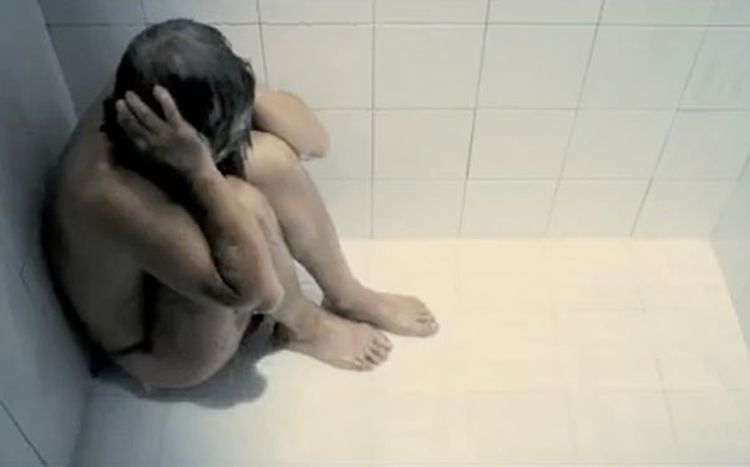
Cinema horror in Europe: happy yucky Halloween
Published on
Translation by:
Cafebabel ENG (NS)In light of the ‘love-it-or-hate-it’ upcoming Halloween on 31 October, we propose three of Europe’s best horror movies at the moment from Serbia, France and Holland, with a running commentary from Franco Calandrini, director of the Ravenna nightmare film festival
‘Whether its rape or mutilation, the canvas is clear for the horror film; it’s a subversive genre that explores the limits of the bearable.’ Franco Calandrini has clear ideas on this particular film genre, and we wouldn’t hear anything less. After all, this is the director of the Ravenna nightmare film festival between 26 – 31 October, and it’s one of the most important in Italy. From Parisian suburban kids becoming police-attacking zombies, a doctor creating a human centipede by sewing three tourists together and Serbia being reduced to a cauldron of sex and blood with the aim of denouncing ‘government oppression’, three recent European productions which have filled venues and done the festival circuit. After all, that's the filter through which cinema horror reflects society and its dramas...right?
The Horde (2009), France
La Horde is the onscreen battle between zombies, cops and gangsters which incorporates the most typical of genre film cliches: the outcasts in the form of the undead. In this film they’re rebels from the Parisian suburbs. First-time filmmakers Yannick Dahan and Benjamin Rocher have created a horror product that is easy to distribute. It’s further proof of the vitality of the French scene in recent years, which added to the face of ‘torture porn’ with movies like Frontière(s) (2007) by Xavier Gens, Pascal Laugier's Martyrs (2008) and À l'intérieur ('On The Inside', 2007) by Alexandre Bustillo and Julien Maury. ‘Countries like France, Spain and the United Kingdom produce the best movies,’ says Calandrini. ‘That’s because they have more money.’ More money means more films and a higher average quality, which is exactly the opposite of what happens in Italy. ‘We're in bad shape,’ continues Calandrini. ‘The audiences harbour prejudices about Italian horror films, producers don’t invest because of fear of losing money and the result is very few films and low quality.’
The Human Centipede (first sequence) (2009), Holland
Dutch director Tom Six’s The Human Centipede picked up the gong for best movie at the 2009 edition of the Ravenna nightmare film festival, one of many awards ranging from Estonia to LA. Reading the synopsis in black and white is enough to explain... The mad Dr. Heiter is a retired demented surgeon specialising in the separation of conjoined twins. He captures three tourists before sewing them together and creating a centipede with a unique human digestive system. The way the director got the idea of the film is widely reported to have been after joking with friends that the best way to punish a child molester would be to sew his mouth to the rear end of an obese truck driver... Lightbulb: a human centipede. A medical adviser was present throughout the movie to ensure it looked accurate. Not that we’d doubt it!
The classic cliches crop up again: a mad doctor, a nazi, both symbols rooted in the nazisploitation sub-genre, which was extremely popular in the late seventies. The film is very raw; can a horror film really show anything it likes? ‘Once I had a doubt while selecting a film for the festival, where a dog was being tortured very brutally,’ agrees Calandrini. ‘Then I spoke with the director who explained that he intended to show how far human cruelty can go. I decided to accept it. The audience must always be allowed to make their own opinions.’ Watch out: a sequel is on its way...
A Serbian Film (2010), Serbia
Srdjan Spasojevic's first feature length film has done the European festival circuit, from Brussels, London, Sitges to Vienna, before finally making it to Ravenna. In Srpski film, Milos is a former porn actor who ends up in a vortex of shocking violence after trying to save his family. The director calls it a political film, a metaphor for the sufferance which the powers have inflicted upon the Serbian people.‘It's a work raising the threshold of visible things,’ says Calandrini. In 2009 it was Mladen Djordjevic’s turn to tell a tale of Serbian nightmare with The Life and Death of a Porno Gang. Should we conclude that the country is full of talent? ‘Even that was a very well thought out film,’ concludes Calandrini, ‘but in reality they are two exceptions. The landscape offers very little Serbia. And I don’t think snuff movies have been shot in reality in Serbia.’
Translated from Cinema horror in Europa: deformare per denunciare



